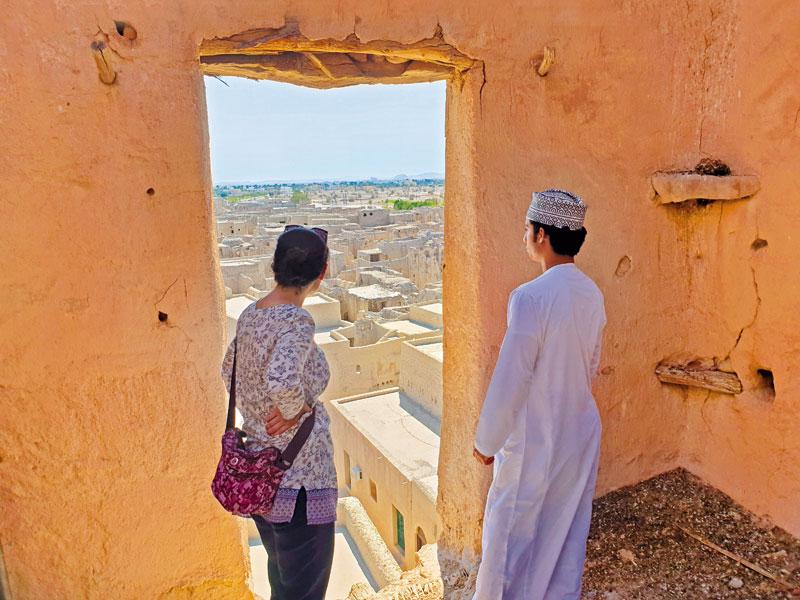





Oman’s largest ancient house complex
Considered as one of Oman’s largest ancient archeological neighbourhood, it contains 376 houses and nearly 250 wells. Because of the recent reconstruction, visitors can enjoy 25 per cent of the area renovated to their former glory from kitchens to storage rooms and from majlis to mosques and libraries. It’s also interesting to note that each of the gates is named significance to their locations. The gate nearest to the market is called the Morning Gate while the others are named ‘Bab Al Qasab’, ‘Bab Al Nasr’, ‘Bab Al Rawla’ ‘Bab Al Burj’ and ‘Bab Al Duajain’. Check out what this means. Overall, Harith al Bilad perfectly preserved Oman’s architecture despite more than nine centuries of construction by skilled Omani hands, where its walls and partitions have remained steadfast to this day.
Historic mosques
Can you imagine yourself praying or walking in the same mosque as people from a hundred years ago or longer? Within Harith al Bilad’s complex are four ancient mosques spread along its central lane. They are Al Ali, Al Ain, Al Shara and Al Rahba. As reported by ONA, Dr Eros Baldisera, professor of Arabic literature at the University of Venice, Italy, author of Writings in the Old Omani Mosques, said that the Mihrab of Al Ali Mosque dates back to the year 909 Hijri. Mihrab of Al Ain Mosque dates back to 911 Hijri, and close to Al Ain Mosque, Al Shara Mosque, whose Mihrab dates back to 922 Hijri.
The doorless tower
Popularly known as Al Fiqain Castle, this landmark once intrigued travellers because of its missing door. At four-storey high, access to the castle in the past was through a rope tied to a column on the second floor and is thrown down to anyone who knows the secret codes. During the restoration and renovation of the castle in 2008, the Ministry of Heritage and Culture created a door to make it easier for guests to venture and explore its four different levels. A visit to the castle is an educational tour into the inner working of a military fort and provides information as to how the fortification works.
Preserved legacy
Manah is an agricultural oasis, and to this day, aflaj like Al Asgharin, Al Akhtam, Al Masraj and Al Mahyool are still used to water gardens and plantations.
Many of its residents also still practice many of the traditional art performances including Razha, A’zi, Taghroud, Hamble Al Boosh, Al Tariq, Al Wailiyah, Zafat Al Kaitha and Al Maghayidh. For tourists, as Manah is known for many of its traditional crafts, it is the perfect place to enjoy Omani halwa and rose water and where one can buy silverworks and other novelty products.
Oman Observer is now on the WhatsApp channel. Click here



